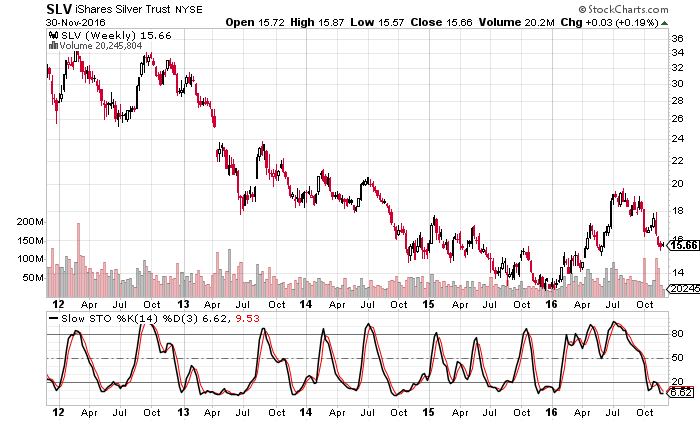TRUMPING A RANDOM WALK
My target for the all-time peak lies immediately ahead at 19,600. Without rehashing the multitude of fundamental and other forms of analyses that I and so many others have expounded upon, I made a broad and strong technical case for this level, a full 2 years ago.
That case was made in the here-linked New York section of the July 6, 2014 report in which I forecasted a blow-off peak for the Dow to 19,500, if a blow-off were to indeed be in the cards, as is so typically case for any long term bull market.
And this has indeed been long term - multi-century, in fact.
The above-linked New York section is, essentially, the technical argument pertaining to today's market, including an explanation regarding the extensive topping formation, the conclusion of which is worsened to the extent that the summit's formation is drawn out
Since the above-linked piece was written 2 years ago, it is safe to say that the top has been drawn out.
(With respect to the prior forecasted 50% declines over the years - whatever the market - the outrageously long topping formations were not as dawn out as the Dow peak is today...not by a long-shot.)
Linked here is a summary of major turning points in multiple markets and asset classes, often within days, regardless the anticipated direction. In each case, the technical case, by its very nature, related to the fundamental background. Therefore, to set the stage regarding today's market...
As example, I draw attention to the perfect 2000 Dow turning point, since it relates to today's foolishness so well. At the end of 1999, all that citizens liked to talk about was Y2K, or what I called, ''The Great Bill Gates Hoax.''
I had forecast that the market would shake-off the great scare (that airplanes were going to start colliding) and rally to minor new highs in January of 2000, to set the market at ease that a return to risk-on was okay.
However, as I had explained, any year end decline that had occurred had NOT been due to the mythical Y2K, but, rather, valuation and fundamental reasons, which included the true peak in the economy 16 years ago, in real (inflation-adjusted) terms. The rest is history, including a 50% debacle (as in 2008, or Tokyo in 1990).
This misdirection and propaganda as to why the market is behaving as it does is typical throughout history and today is no different. Once investors have been fed the wrong storyline, they are sitting ducks for the major players who are liquidating, based on the correct fundamental and valuation analyses.
Today's story is that Trump is good news, that the scare about an upset Trump victory was misguided, and that his arrival is, in fact, ushering-in a new tomorrow, replete with capitalist hope.
So, everyone has set aside the global fear of political unrest, including wars and, of course, the minefield of calamitous financial possibilities, including bail-ins.
How is it possible that every country has provisions for such grand wealth confiscation, while those same populaces are either totally unaware that such clauses exists, or what bail-ins even mean to them? How?
And if a citizen has heard of bail-ins, and does actually understand that all uninsured capital at his/her financial institution may be confiscated (and some or many definitely will), how is it that that citizen robotically (particularly in North America, since bail-ins have already occurred in Europe) simply believes, ''They won't let that happen here.'', forgetting that ''they'' are the ones who wrote the bail-in legislation in the first place?
How does one practice a denial that is based on the fact that no such event has ever occurred in history (at a major chartered bank in Canada, for instance), while ignoring the fact that governments never had bail-in clauses before?
How does one ignore the financial realities upon which were based those undemocratic clauses, including the misrepresentations by the politicians, as regards why those bail-in clauses exist in the first place?
PRECIOUS METALS
The here-linked October 11, 2016 article appears to have been a touch early, but the song remains the same!
The indicator linked above (beneath the chart) is oversold as before, though, this time, today's chart is a look of the weekly 5-year iShares Silver (NYSE:SLV) (see bottom of this section).
The support levels, the reverse shoulder-head-shoulder formation, and multi-year wave count reinforce the October 11 article's findings.
Aside from noting the oversold condition of the stochastic (among many, my single-favourite indicator), please bear in mind that, unlike the daily charts, the weekly stochastic is neither leading nor lagging. It merely moves in step with the trend (coincident momentum indicator).
Time cycles
Going back 15 years (I didn't bother looking farther), silver bottoms EVERY 6 months, owing to the commodity funds' book-closings and how the managers are remunerated.
On a minority of occasions, the cycle bottoms a month early as clever hedge fund managers who are aware of the major trend and any possible short term influences get out in front of the crowd. The is no shortage of reasons to suspect that today may be such an occasion.
On a related basis (for our topic), as in the past, I draw attention to how one may time the Dow with a look to the Nikkei for a clue.
Going back over a quarter-century, and as I have written so many times before, the Nikkei bottoms at our calendar year end (most often with uncanny precision), resulting from Western tax considerations. (I always add that the mid-March to March 30 period marks either a high or low for the Japanese yearend.)
Simply, while the Nikkei already saw a multi-thousand-point collapse (unlike the Dow), they still do move together on a time-cycle basis.
Therefore, the inflection point of inflection points has arrived or is extremely near, for the relationship between U.S. equities and the precious metals (lagging that ex-U.S. event by 2 full years).

CONCLUSION
When contemplating the greatest trade of all-time, we must look at the inflection point of global equities versus the precious metals.
What North Americans just don't realize is that this happened over 2 years ago. For sophisticated globally-minded investors, this world is NOT exclusively U.S. Dollar-centric, nor is it Dow-centric.
Fully two years ago, I couldn't be kept quiet about the European Banking Index, or so many other indices, or the yuan, or yen, or euro, or Swiss Franc, or any creditor currency, or anything at all, depending on the moment in time, even though 2015 remained a poor year for the precious metals, which only concluded their cyclical bear phases (within their secular bull markets) a full year later (a year ago).
Today, favouring North Americans who would like to feel that they haven't missed anything, the USD, precious metals and Dow have indeed lined up now to create another all-time inflection point of inflection points.
(The role played by currencies pertains to the denomination of the financial vehicle selected.)
Even the Nikkei finally gave up the ghost and joined the global bear market, leaving the Dow to its global ''random walk.'' (Globalization has altered the definition of that once Dow indices-related term, we may all reasonably agree.)
Never forget that trumping a random walk is the effect of loneliness, namely, the utter abandonment by investors, whose nerve can be drawn out no further.
Instead of being hypnotized and suckered into wondering if the Dow can achieve 20,000, I believe that one ought to spend one's time finding the most efficient way possible for participating in that PM/equities inflection point, according to one's means and investment knowledge, all so as to enjoy the greatest possible safety and leverage, by capitalizing on the fact that these 2 asset classes' volatility premiums are putting in historic lows at the same time as U.S. stocks and precious metals are achieving all-time highs and secondary lows, respectively.
Whether via a portfolio of trades that an institution or individual investor deems appropriate, or whether by way of simple one-off transactions, one may contemplate a diversification plan that could well represent the most efficientmeans by which to achieve one's desired level of protection (smoothed portfolio volatility) (or, simply, profit opportunity), which uses a defined leverage that is borne of a series of extreme financial inputs not seen to-date, which serve to create investments that arguably represent the greatest mis-pricings ever.
Remember, one needn't believe that the Dow will crash. If that is too unimaginable, one may simply focus on the fact that one is only concerned with out-performance and the heretofore unseen great inter-asset class premium mispricing that is available today.
If U.S. equities were to get smashed, then substantial gains could become windfall gains. Otherwise, out-performance and mis-pricings would carry the day.
However, my own view is that the world indices will start to align again, and relatively soon.
Anyone for a history lesson?
Dow (today' high):19,225.29 (optimimal target: 19,600)
SLV: 15.66
